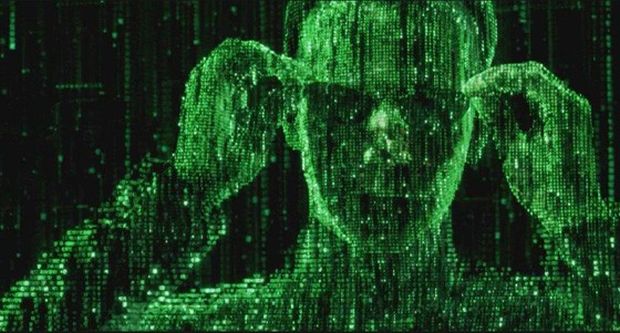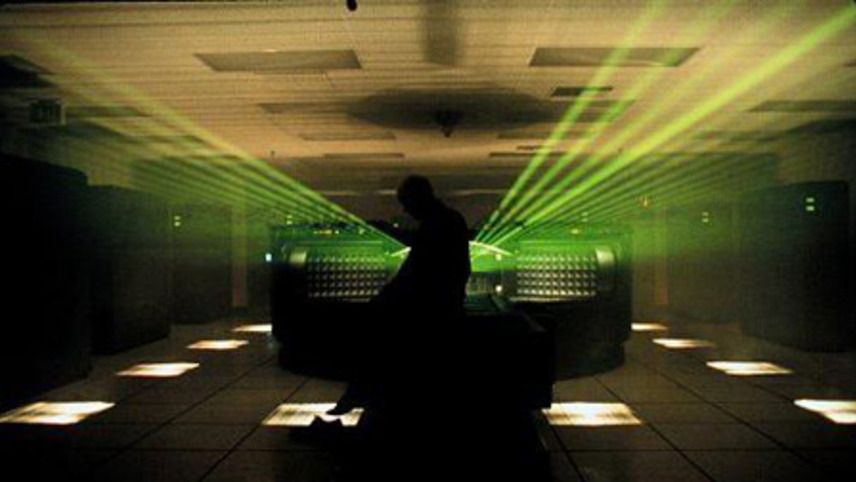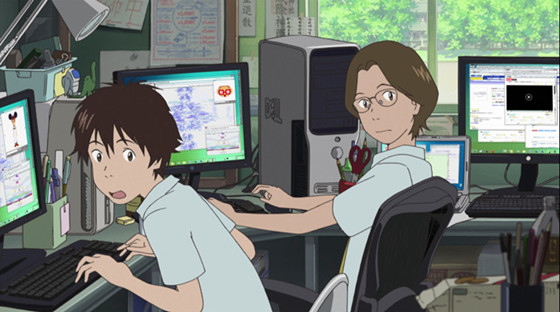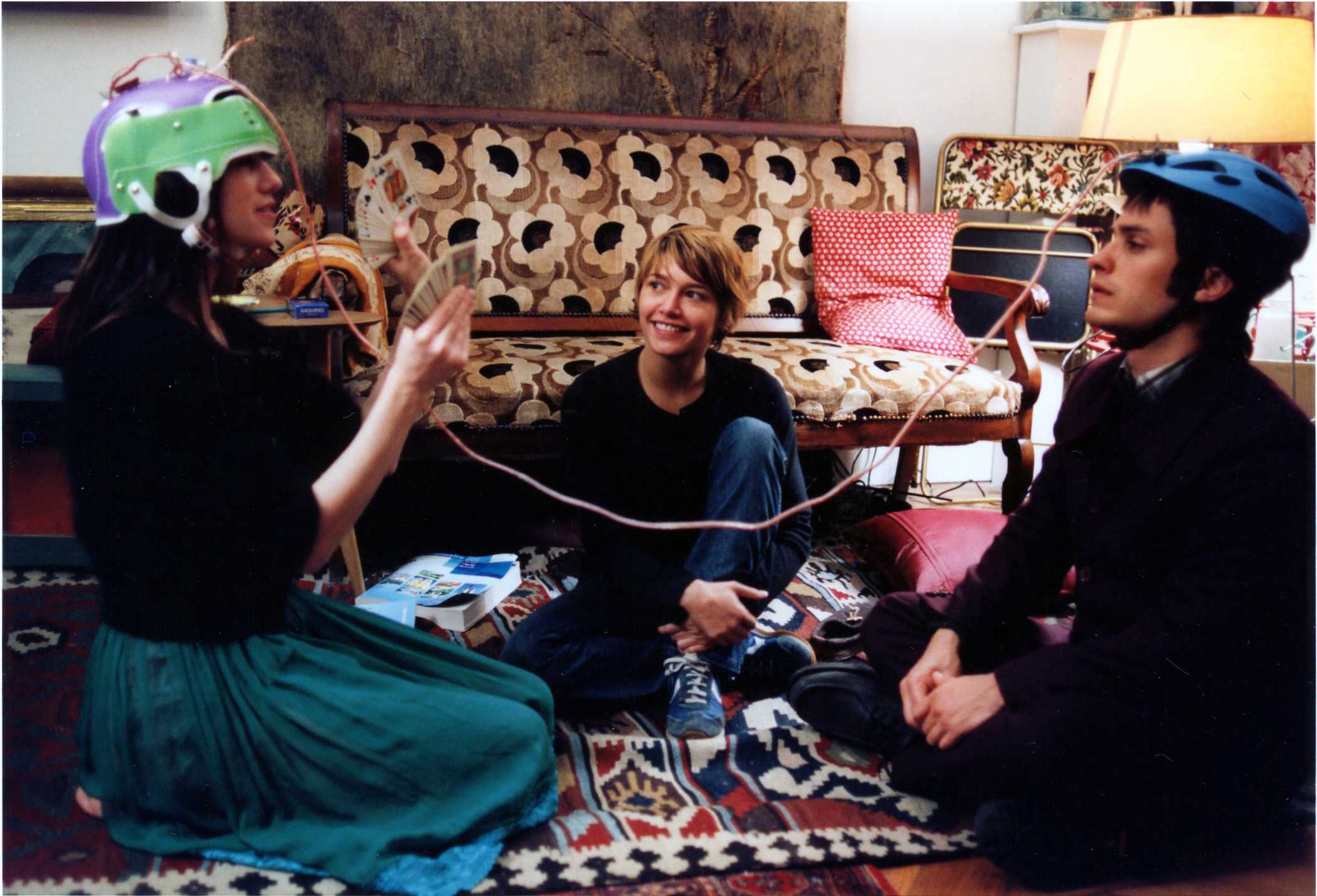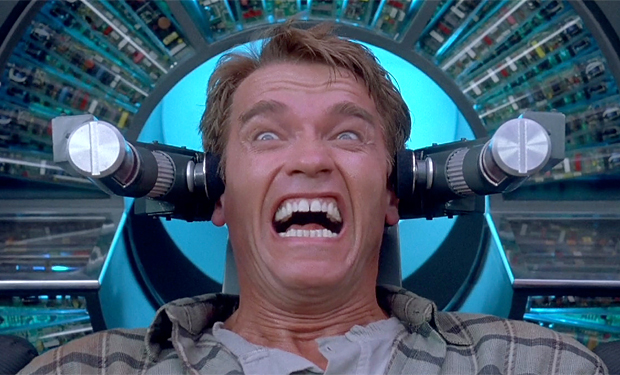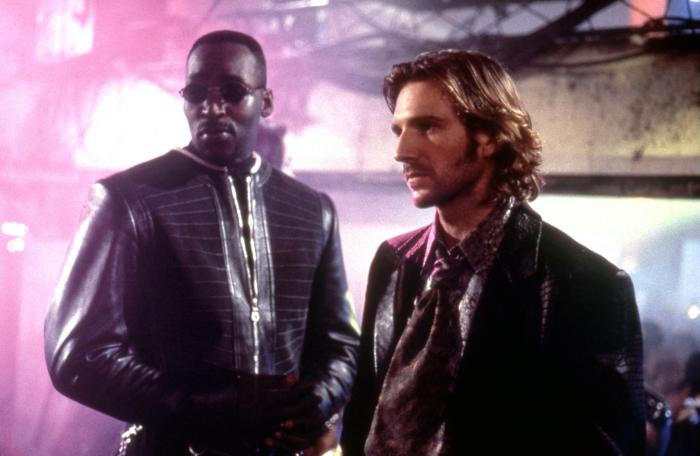Virtual reality has a long history in cinema, literature, and video games. The genre is mostly used in science fiction films set in the distant future, featuring characters who have the technology to travel to virtual worlds.
Virtual realities differ by movie, but often resemble a computer hyperspace that the heroes hack into, or a videogame that they engage in using avatars or surrogates. Commonly films are set in a technologically advanced future filled with corruption, hackers, and cybercrime, which blends science fiction with film noir, cyberpunk, or horror.
These themes are common in stories based on science fiction literature, such as titles like Neal Stephenson’s Snow Crash (1992) or William Gibson’s Neuromancer (1984), and the genre is greatly influenced by 20th century science fiction authors like Philip K. Dick, Isaac Asimov, H.G. Wells, and Arthur C. Clarke.
Films that emphasize the video game-like quality of virtual reality have more recently been associated with the culture of anime and manga, which overlaps with gaming and social network communities.
Another subset of films places more emphasis on ancient questions in philosophy about the nature of consciousness, dreams, and reality. These films tend to use virtual realities that are more dream-like, psychological, or surreal, and which may lack a reliable coherence or rules of physics. An early example in literature is Jorge Louis Borges’ story The Garden of Forking Paths (1941), which explores the idea of a multiverse, or a universe that contains a multitude of parallel worlds.
A feature of nearly all modern virtual reality movies is the use of state-of-the-art special effects and captivating battle sequences. The virtual worlds in these films look like something out of the future, and are intended to dazzle audiences. In keeping with the theme, 3D glasses are often used in theater releases of virtual reality films to create an immersive experience for audiences.
11. The Thirteenth Floor (1999)
Plot: Mysterious events surround the death of a wealthy inventor of a virtual reality technology. Once declared a suspect in the murder, a previous employee of the inventor begins searching for clues in the virtual world. The virtual reality is a videogame-like simulation of Los Angeles in the past, but appears frightening realistic upon closer inspection, opening many new questions about the murder.
Virtual Reality: A computer-built virtual reality of 1937 Los Angeles, complete with virtual humans. Humans lay down in a coffin-like box to be transported, reminiscent of the deprivation tanks in Altered States (1980).
Highlights: Due to its use of a plot partially based in the past, The Thirteenth Floor does not contain the most visually striking special effects of all virtual reality movies. This does not detract much from the story, however, which proves to be captivating. The psychological horror and murder mystery aspects of the film keep viewers’ attention all the way through, which culminates in an interesting plot twist by the films end. All and all, the Thirteenth Floor is a hidden gem among better-known virtual reality films.
10. Summer Wars (2009)
Plot: At the beginning of the film, the virtual world OZ is thought to simply be a social network with some video game-like features. Soon, however, the high school-aged protagonist finds himself teaming up with the family of a young woman he meets to defeat a malicious program inside OZ. The stakes are raised as the virtual world becomes increasingly connected with the real world they log in from, putting the lives of the protagonist and his friend’s family at risk.
Virtual Reality: Users hack into the OZ, the virtual reality world, where they exist as video game-like avatars. Inside, they have superhuman fighting capabilities.
Highlights: Summer Wars is one of the most highly praised animated virtual reality films, having won major film awards in Japan, for good reason. Its use of state-of-the-art 2D and 3D animation makes every scene visually striking, from ordinary slice-of-life conversations to the aerial fights and chases inside of OZ. The film also has a compelling storyline, and manages to make use of drama, suspense, and humor without losing the audience’s attention.
9. The Science of Sleep (2006)
Plot: The Science of Sleep takes virtual reality in a different direction than that of futuristic science fiction movies. The main character in the movie is an artistic, somewhat eccentric young man whose vivid imagination often leaves him out of touch with reality.
The storyline follows him as he starts a new job, deals with emotional problems from his past, and stumbles his way into a new friendship and relationship with a woman living across from his apartment. Throughout these day-to-day events, the film shows creative dream and imagination sequences that reflect the protagonist’s subjective experience.
Virtual Reality: Imagination and dreams act as a virtual reality device in the film. The imagination of the main character is often colorful, animated, or chaotic, and in many of the sequences, he gains superhero-like abilities that allow him to create a more interesting life for himself.
Highlights: Despite its unconventional storyline, The Science of Sleep somehow succeeds in capturing the attention and imagination of the audience. As in the earlier film Eternal Sunshine of the Spotless Mind (2004), the director, Michel Gondry, does an expert job of blurring the real and imagined sequences, creating a truly dream-like effect for the viewer.
8. Total Recall (1990)
Plot: Total Recall is an action-filled adventure story set in space, loosely based on the story We Can Remember It For You Wholesale (1966) by Philip K. Dick. As in Predator (1987), Arnold Schwarzenegger’s portrayal of the main character in the film accounts for much of its appeal – he plays an invincible fighter who also has strong wits and a sense of humor.
The plot involves the memory loss of the protagonist and his struggle against forces that want to manipulate and control him. As he learns more about his past, he begins to struggle with the realization that he may have been brainwashed.
Virtual Reality: In this film, virtual reality comes in the form of mind control: implanted false memories, wiping of true memories, or overall brainwashing of a person’s behavior.
Highlights: While mostly remembered as an action-adventure science fiction film, Total Recall has a large entertainment value that stands the test of time. Audiences find themselves rooting for the success of Schwarzenegger’s character against his enemies throughout the movie, which becomes even more entertaining with his great one-liners.
7. Strange Days (1995)
Plot: Set in a Los Angeles setting that is not far removed from the present day in time, Strange Days combines elements of crime, horror, and action into a thoughtful story. In film, violence has erupted in L.A., creating an adrenaline-filled atmosphere for a cast of characters that includes agents, officers, criminals, and prostitutes. The storyline follows a tangled web of crime that the characters get trapped in.
Virtual Reality: The fictional technology used in the film is called a SQUID (Superconducting Quantum Interference Device). When an individual wears the device, it records everything they see and do from their own perspective. SQUID devices can also be replayed by other individuals if they use a device called a deck, which results in them experiencing the experiences of the individual who originally wore the device.
Highlights: Despite many positive reviews, Strange Days is not entirely a mainstream hit, but has become a cult classic among science fiction films. The tone of the film is dark, but it is also a great adventure story and thriller. The memory recording device in the movie is an ingenious idea that keeps the film interesting throughout.
